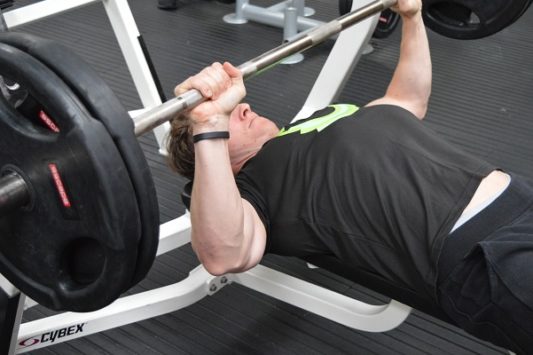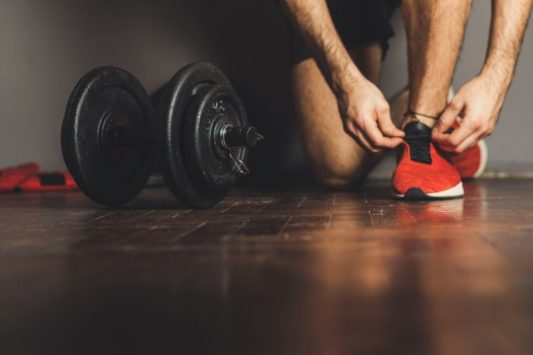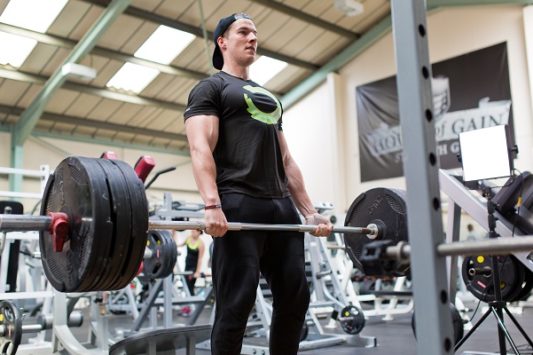One of the most common phrases when asking someone what their goal is will be a variation of the following: “I want to tone up/lean out.” This concept is referred to as body recomposition. Your body composition is the ratio of fat mass to lean mass in your body. Sometimes, body composition is used interchangeably with body fat percentage, but body fat percentage is just one part of your overall body composition.
Some say due to thermodynamics (the way the body both uses and stores energy) that this is not possible. However by keeping a close eye on your diet (specifically when you eat what) and your training, you can absolutely build muscle and burn fat at the same time.
What is a calorie deficit?
We consume calories in our day-to-day diet from macronutrients (proteins, carbs and fats). They are the units of energy we use or store in the body for different purposes. A calorie deficit comes when we burn more calories per day than we consume through diet. These calories will be burnt through your metabolism and activity levels. We can manipulate this by either eating less or burning more, either way it is an energy in-out that results in fat loss or gain.
What is a calorie surplus?
Yep, you guessed it. A caloric surplus is when the amount of calories that we consume is higher than the amount of calories we burn. In a caloric surplus, our body mass increases. Of course there is also the possibility of energy balance. Energy balance looks at the amount of calories that we consume against the amount of calories that we burn. If the two are the same, we are in a state of energy balance.
How does this work?
The laws of thermodynamics dictate you must use energy to burn fat, and store energy to build muscle. This suggests you need to be in a calorie (energy) surplus to build muscle tissue, and a deficit to burn fat. This isn’t 100% accurate, however, and with careful tweaking of training and diet alike you can create a body re-composition, taking the wheel of how your body utilises energy.
Gaining fat whilst losing muscle and gaining muscle whilst losing fat – what do these two things have in common? Both involve losing energy from somewhere – either fat or muscle. Thermodynamics is often referred to as ‘the movement of energy’, but also ‘the conversion of energy’. It’s the second one I find more apt, as it’s possible for your body to take energy from one source and use it for another purpose if it sees fit. Your body is a master adapter and will deal with the stress you place on it. That said, it recovers in the most appropriate way dependant on the fuel you pour in.
If you’ve ever found yourself puzzled why anyone would willingly spend extra on ‘Premium Unleaded’ at a petrol station – this is the bodily equivalent (and well worth the additional cost). If you wish to change your body composition, it’s imperative you provide it with the correct stimulus (training) and intake the correct energy at the right times. If this is done correctly you can utilise fat stores as energy and build lean mass at the same time, changing your body composition over time, even when in a calorie deficit.
Thermodynamics covers the conversion of energy, but it doesn’t say anything about how you can use one cell’s energy source for another cell’s gain. Muscle and fat cells are directed calories completely independently within the body, as such they’re independent functioning compartments. What I see regularly with clients is by using effective nutrient timing; such as regulating sugars and carbohydrates during the day the body will go into fall back mode utilising energy from stored fat instead. If you regularly consume carbs and sugars during the day as energy your body will use its most readily available source of energy being the glucose in your blood from the snacks you’ve just eaten, keeping the excess fat exactly where it is.
So, what is the down-low on muscle and fat?
If you incorporate some intense training and a more effective nutrition plan, you’ll soon find yourself dropping fat and gaining lean mass. I saw this myself when dieting for my first men’s physique competition. I started my diet at 18% body fat, weighing in at 78kg. This was the first time I’d embarked on a structured nutrition plan across 12 weeks with a competition in mind.
With effective nutrient timing, good food sources and consistent hard training I competed weighing 76kg at 7% body fat, completely changing my body composition – decreasing fat tissue and increasing lean mass. I’ve utilised structured nutrition and training plans since, taking full advantage of these principles.
If you get to know your body and how to use energy more effectively, it’ll improve your training and body composition greatly. Remember: your body is far too precious for Standard Unleaded. Pump yourself full of the good stuff – consider a high quality whey such as Pure Whey Protein™, a well dosed multi like Complete Multivtamin Complex™ and some high strength Omega 3’s
About the Author
Ben Rowe is the Lead Coach at Team Benbo Body Coaching. Team Benbo have over 10 years of experience in the fitness industry, sharing their in-depth knowledge around Sports Specific Training, Nutrition, Online Coaching and Competition Preparation.










